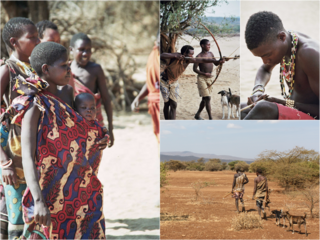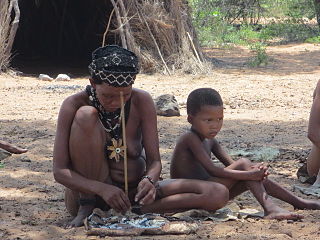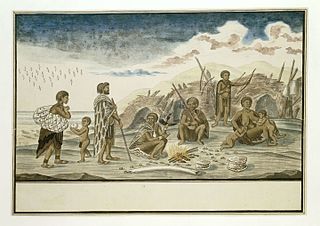 W
WThe Capsian culture was a Mesolithic and Neolithic culture centered in the Maghreb that lasted from about 8,000 to 2,700 BC. It was named after the town of Gafsa in Tunisia, which was known as Capsa in Roman times.
 W
WThe Hadza, or Hadzabe, are a Tanzanian indigenous ethnic group mostly based in southwest Karatu District of Arusha Region. They live around Lake Eyasi in the central Rift Valley and in the neighboring Serengeti Plateau. There are, as of 2015, between 1,200 and 1,300 Hadza people living in Tanzania, however only around 400 Hadza still survive exclusively based on the traditional means of foraging. Additionally, the increasing impact of tourism and encroaching pastoralists pose serious threats to the continuation of their traditional way of life.
The Kalahari Debate is a series of back and forth arguments that began in the 1980s amongst anthropologists, archaeologists, and historians about how the San people and hunter-gatherer societies in southern Africa have lived in the past. On one side of the debate were scholars led by Richard Borshay Lee and Irven DeVore, considered traditionalists or "isolationists." On the other side of the debate were scholars led by Edwin Wilmsen and James Denbow, considered revisionists or "integrationists."
 W
WThe ǃKung are one of the San peoples who live mostly on the western edge of the Kalahari desert, Ovamboland, and Botswana. The names ǃKung (ǃXun) and Ju are variants words for 'people', preferably used by different ǃKung groups. This band level society used traditional methods of hunting and gathering for subsistence up until the 1970s. Today, the great majority of ǃKung people live in the villages of Bantu pastoralists and European ranchers.
 W
WThe Okiek, sometimes called the Ogiek or Akiek, are a Southern Nilotic ethnic group native to Tanzania and Southern Kenya, and Western Kenya. In 2019 the ethnic Okiek population was 52,596, although the number of those speaking the Akiek language was as low as 500.
 W
WThe San peoples, or Bushmen, are members of various Khoe, Tuu, or Kxʼa-speaking indigenous hunter-gatherer cultures that are the first cultures of Southern Africa, and whose territories span Botswana, Namibia, Angola, Zambia, Zimbabwe, Lesotho and South Africa. In 2017, Botswana was home to approximately 63,500 San people, which is roughly 2.8% of the country's population, making it the country with the highest population of San people.
 W
WThe Strandlopers are a Khoikhoi-derived people who live by hunting and gathering food along the beaches of south-western Africa, originally from the Cape Colony to the Skeleton Coast.